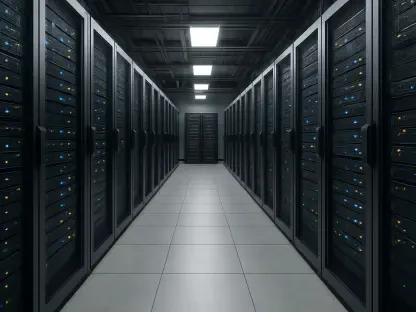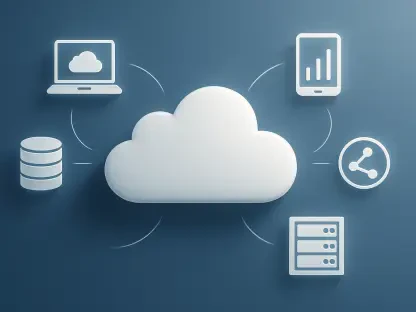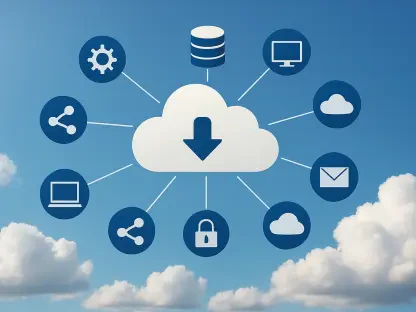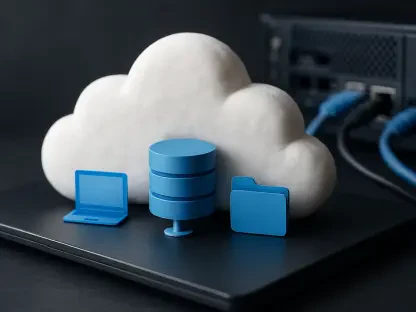Imagine a world where the backbone of modern technology—cloud computing—faces unprecedented disruptions, forcing businesses to rethink their digital strategies overnight. As the tech landscape barrels toward 2026, forecasts suggest a turbulent yet transformative period for cloud infrastructure, driven by the dual forces of artificial intelligence (AI) innovation and operational vulnerabilities. Major cloud providers, often referred to as hyperscalers, are racing to build AI-native systems, while newer competitors, dubbed neoclouds, challenge their dominance with specialized offerings. At the same time, enterprises are grappling with rising costs and risks, pushing them toward greater autonomy. This dynamic sets the stage for a pivotal year where outages could expose fragilities, and emerging players might redefine market power. The implications of these shifts promise to ripple across industries, raising critical questions about reliability, control, and the future of tech infrastructure.
Hyperscaler Challenges and Predicted Disruptions
The relentless push for AI-driven infrastructure among hyperscalers like AWS and Azure is poised to create significant challenges by 2026. These major cloud providers are redirecting vast resources toward GPU-centric data centers tailored for AI workloads, often at the expense of maintaining older x86 and ARM-based systems. This shift, while innovative, leaves aging infrastructure susceptible to breakdowns under growing complexity. Predictions indicate that at least two multiday outages will strike in 2026, disrupting critical services across sectors. Such incidents, building on recent high-profile failures, are expected to heighten customer concerns about reliability. Businesses dependent on these platforms for essential operations may face costly downtime, prompting urgent demands for infrastructure upgrades. The focus on cutting-edge AI capabilities, though promising, risks exposing operational weak spots that could undermine trust in these tech giants if not addressed swiftly.
Beyond the immediate threat of outages, the broader implications for hyperscalers signal a turning point in customer relationships. As enterprises experience disruptions, many are likely to scrutinize their reliance on a handful of dominant providers. The predicted outages in 2026 will not merely be technical hiccups but catalysts for reevaluating long-standing contracts and service-level agreements. Customers, especially those in industries like finance and healthcare where uptime is non-negotiable, may push for greater transparency and investment in legacy system resilience. Hyperscalers, caught between innovating for AI and maintaining existing infrastructure, face a delicate balancing act. Failure to prioritize stability alongside advancement could erode market confidence, opening doors for alternative solutions. This tension underscores a critical juncture where operational reliability becomes as vital as technological progress in shaping the cloud computing narrative.
Enterprise Shifts Toward Autonomy and Control
In response to the vulnerabilities and rising costs tied to hyperscaler dependency, a notable shift is expected among enterprises by 2026. Forecasts suggest that at least 15% of businesses will pivot to private AI solutions hosted on private clouds, prioritizing control over sensitive data and workflows. This move stems from concerns over data lock-in, escalating expenses, and the operational risks exposed by potential outages. High-profile restrictions, such as limitations on third-party access to certain platforms, further fuel this trend by curbing data utilization on external systems. Enterprises, particularly those handling critical or regulated information, are increasingly viewing data sovereignty and resilience as non-negotiable. This cautious approach reflects a broader push to mitigate risks while still harnessing AI capabilities, signaling a departure from full reliance on public cloud giants.
This growing preference for private environments also highlights a strategic realignment in how businesses approach technology adoption. By 2026, the emphasis on autonomy is anticipated to reshape investment priorities, with companies allocating more resources to in-house infrastructure and tailored AI models. Unlike public cloud solutions that often come with standardized offerings, private setups allow for customization to meet specific security and compliance needs. This shift, while resource-intensive, offers a safeguard against the unpredictability of hyperscaler disruptions and cost surges. Additionally, it empowers organizations to maintain tighter governance over their digital assets, a factor becoming paramount in an era of heightened cyber threats. As enterprises weigh innovation against stability, the move toward private clouds represents a calculated step to future-proof operations amidst an evolving tech landscape.
The Emergence of Neoclouds as Market Disruptors
A disruptive wave is forecast to hit the cloud computing sector by 2026 with the rise of neoclouds—newer, GPU-first providers like CoreWeave, Lambda, and Nebius. Backed by significant investments from NVIDIA and venture capital, these players are expected to capture $20 billion in revenue, challenging the stronghold of traditional hyperscalers in the generative AI space. Unlike established giants, neoclouds focus on high-performance AI infrastructure, integrating open-source models and sovereign AI capabilities to cater to enterprise demands. Their global expansion, particularly in regions like Europe and Asia, positions them as agile competitors offering specialized solutions. With enterprise deployments projected to triple, neoclouds are not just niche GPU wholesalers but serious contenders reshaping market dynamics and forcing hyperscalers to rethink their competitive strategies.
The ascent of neoclouds also introduces a fresh perspective on how AI infrastructure can be delivered to meet diverse needs. By prioritizing flexibility and performance over the broad, one-size-fits-all models of traditional providers, these emerging entities are carving out a unique space in the industry by 2026. Their ability to offer tailored solutions for AI workloads appeals to businesses seeking alternatives to the rigidity often associated with hyperscaler ecosystems. Moreover, their focus on regional compliance and localized services addresses growing concerns about data sovereignty, particularly in regulated markets. This competitive edge could accelerate their adoption among enterprises wary of over-dependence on a few dominant players. As neoclouds gain traction, their influence is likely to spur innovation across the sector, pushing all providers to elevate standards and adapt to a rapidly changing environment.
Navigating the Future of Cloud Innovation
Reflecting on the turbulent journey of cloud computing, the path to 2026 reveals a landscape shaped by bold innovation and stark vulnerabilities. Hyperscalers grapple with the fallout of major outages, underscoring the fragility of legacy systems amid an AI-driven push. Enterprises, wary of risks, turn to private clouds for greater control, while neoclouds emerge as formidable challengers, redefining market competition with specialized offerings. Looking ahead, stakeholders must prioritize actionable strategies to balance progress with stability. Hyperscalers should invest in robust infrastructure upgrades to prevent disruptions, while enterprises might consider hybrid models blending private and public clouds for flexibility. Meanwhile, fostering collaboration between providers and users could drive standards for reliability and data governance. As the tech ecosystem evolves, proactive steps to address these challenges will be essential in harnessing AI’s potential without sacrificing operational trust.









